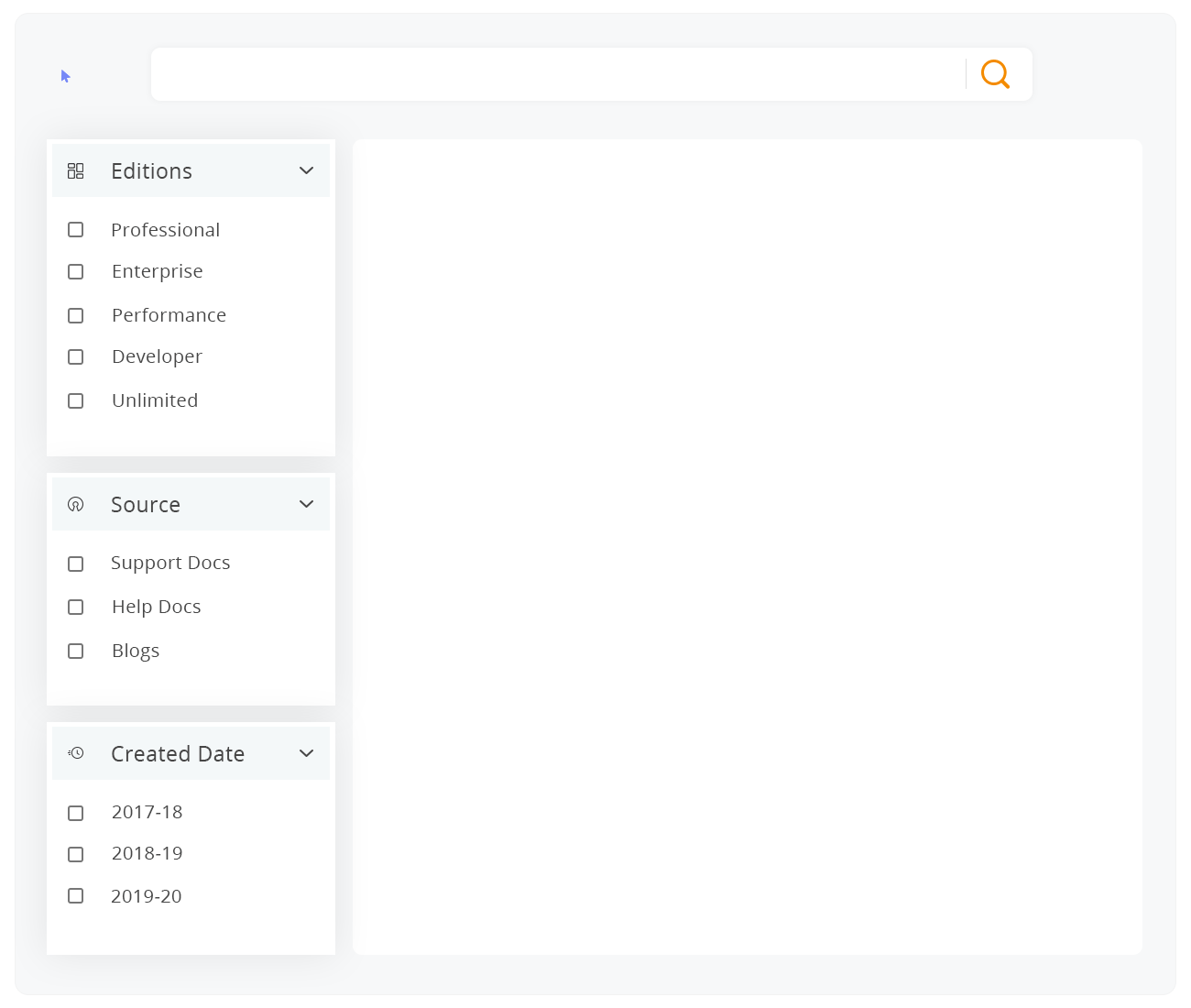
We live in an age where we are exposed to huge volumes of information every second. Did you know by the year 2020, 1.7 megabytes of new information will be created every second, per person (Source)? Having said that, currently, 95% of businesses need to manage unstructured data (Source). Hence, it would be correct to assume that a traditional search engine would function as the agent of chaos. Luckily, faceted search can help avert such situations.
But first, for the uninitiated:
What’s Faceted Search?
It’s guided navigation through the use of tiny square boxes, called facets, that your customers or employees can select to improve the findability of their search results. Primarily, facets categorize the results on your portals or even community and help users find more relevant results.

In addition to this, there are several other reasons why your business should adopt a faceted search engine
Faceted search brings users a step closer to relevant results by narrowing down the search results. Imagine the plight of your customers coming over to your community loaded with information and data. Seldom do they navigate through the drop-down menus to drill down their search results. They don’t have the time to read various tabs or check what’s in the drop-down menus. So the search bar is their go-to.
An AI-powered search engine has the added capability to automatically interpret & select the most suitable facet based on the search query. For instance, if a user searches for ‘display issues in ABC 23 tablet’, the advanced search engine will proactively select the facet ‘ABC 23’ for providing more useful results and hence deliver a better CX.
It Knows Your Peeps Better
Leveraging machine learning, smart search engines analyze the user data – their profile, search history, behavior, location, etc. – to automatically select the facets to narrow down the scope of search and display the most relevant results to the user. Now, consider a similar scenario we discussed above:
ABC is a conglomerate. Among other products, it sells smartphones and home theaters. It has one customer community that caters to all its customers. John is 23 and from California, USA. He uses an ABC X8 smartphone. He uses the ABC customer community regularly to stay up-to-date and solve technical issues with his phone. Rose is 32 from London, England. She has an ABC Home theatre (TV-MT950) and she is a user of the ABC customer community as well.
Both of them searched for the keyword “display” in their search bar of the ABC community portal. Knowing the users and their search history, the search engine automatically selects facets for them – XYZ X8 facet for John and TV-MT950 for Rose – and displays personalized search results to both.
It Minimizes Redos
Now let’s assume you have basic facets on your site. A user comes and searches for something after selecting one or more facets and once the results are displayed, the selected facets are often gone! Sounds similar, right? And this happens more frequently than one would like. What if they aren’t done searching? Also, there’s a good possibility that they might not be satisfied with the displayed results and want to dig deeper by leveraging the sub facets as well.
Being forced to reselect the facet will not only annoy them but they also might not be able to recall the facets they used in the first place. If they select the wrong ones and end up with irrelevant results, the negative experience is going to push them to their limits.
An AI-driven search engine has the intelligence to retain the selected facet unless the user manually unselects them. This prevents any unnecessary regression and empowers users to seamlessly perform multiple searches with the same facets and have a positive experience.

It Lets You Dive Deeper into Information
Sometimes the data across enterprises is so vast that your users may need more than just a facet to point them in the right direction. This is when the sub facets or nested facets come to save the day. They help you narrow down the search results even more to get the information buried deep in the information jungle.
It Gives Richer & Smarter Insights
At the end of the day, you want your customers to have a satisfying and good experience when interacting with your brand. One practical way to ensure that is by analyzing their search behavior.
An advanced faceted search provides rich and deep insights into user search behavior. It provides real-time reports that help you identify which facets are most and least used. It can be further used to identify which content pieces need improvement and hence assist in forming a good content strategy.
Want to refine the user search experience with facets? Try SearchUnify
SearchUnify is a cognitive search solution that enhances the user search experience with all the above mentioned facets. Also, it provides facets that you can configure and customize according to your unique requirement. To see it live in action, request a free demo today!



















